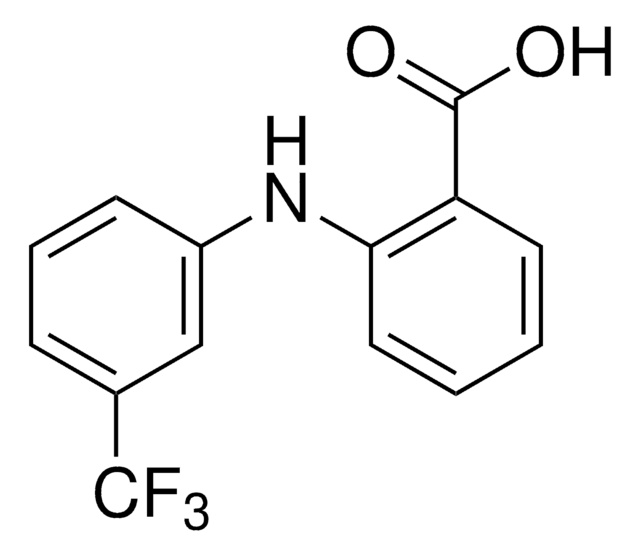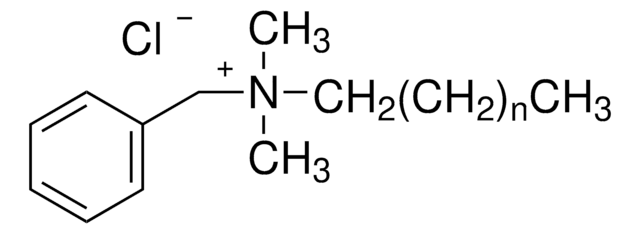03351
Diethylene glycol monobutyl ether
for surfactant analysis, ≥99.0%
Sign Into View Organizational & Contract Pricing
All Photos(1)
Synonym(s):
2-(2-Butoxyethoxy)ethanol, BDG, Butyldiglycol
Linear Formula:
CH3(CH2)3OCH2CH2OCH2CH2OH
CAS Number:
Molecular Weight:
162.23
Beilstein:
1739225
EC Number:
MDL number:
UNSPSC Code:
12164500
PubChem Substance ID:
NACRES:
NA.21
Recommended Products
grade
for surfactant analysis
Quality Level
Assay
≥99.0% (GC)
≥99.0%
form
liquid
impurities
≤0.1% water
refractive index
n20/D 1.432
bp
224-228 °C (lit.)
density
0.953 g/mL at 20 °C (lit.)
SMILES string
CCCCOCCOCCO
InChI
1S/C8H18O3/c1-2-3-5-10-7-8-11-6-4-9/h9H,2-8H2,1H3
InChI key
OAYXUHPQHDHDDZ-UHFFFAOYSA-N
Looking for similar products? Visit Product Comparison Guide
Application
- Optimal Design of Alkaline-Surfactant-Polymer Flooding under Low Salinity Environment: Research highlights the use of diethylene glycol monobutyl ether in enhancing the efficiency of enhanced oil recovery methods, particularly in low salinity environments. This application points to its potential in reducing the environmental footprint of oil extraction processes (Novriansyah A, et al., 2020).
- Bioaugmentation for treatment of full-scale diethylene glycol monobutyl ether (DGBE) wastewater by Serratia sp. BDG-2: Demonstrates the solvents biodegradability and the potential for its removal from wastewater using specific bacterial strains, highlighting important environmental safety considerations (Chen M, et al., 2016).
- Diethylene glycol mono butyl ether concentrations in room air from application of cleaner formulations to hard surfaces: Examines the air quality implications of using diethylene glycol monobutyl ether in cleaning products, stressing the importance of monitoring and managing indoor air pollutants in industrial and domestic environments (Gibson WB, et al., 1991).
Signal Word
Warning
Hazard Statements
Precautionary Statements
Hazard Classifications
Eye Irrit. 2
WGK
WGK 1
Flash Point(F)
closed cup
Flash Point(C)
closed cup
Personal Protective Equipment
dust mask type N95 (US), Eyeshields, Gloves
Certificates of Analysis (COA)
Search for Certificates of Analysis (COA) by entering the products Lot/Batch Number. Lot and Batch Numbers can be found on a product’s label following the words ‘Lot’ or ‘Batch’.
Already Own This Product?
Find documentation for the products that you have recently purchased in the Document Library.
Christopher R Gibson et al.
Journal of the American Society for Mass Spectrometry, 14(11), 1247-1249 (2003-11-05)
Tandem liquid chromatography-mass spectrometry coupled to online radioactive material detection (LC/RAM/MS/MS) is a technique that is used routinely for in vivo and in vitro drug metabolism studies and allows for a simultaneous correlation between radiochemical peaks and mass spectral data.
Yeomin Yoon et al.
Journal of membrane science, 261(1-2), 76-86 (2005-09-02)
Rejection characteristics of organic and inorganic compounds were examined for six reverse osmosis (RO) membranes and two nanofiltration (NF) membranes that are commercially available. A batch stirred-cell was employed to determine the membrane flux and the solute rejection for solutions
Thomas Göen et al.
Toxicology letters, 134(1-3), 295-300 (2002-08-23)
The aim of the study was to investigate the suitability of butoxyethoxyacetic acid (BEAA) as a biomarker of exposure to water-based cleaning agents containing diethylene glycol mono butyl ether (DEGBE). The study was performed in two printing plants where water-based
W Mücke et al.
Zentralblatt fur Hygiene und Umweltmedizin = International journal of hygiene and environmental medicine, 201(4-5), 377-386 (1999-01-23)
The investigation of building products in test chambers contains so far only analytical and sensory measurements. In this paper, first experiments for the direct testing of the acute toxicity of building product emissions with the bioluminescence inhibition test are presented.
Occupational contact dermatitis from diethylene glycol monobutyl ether in a podiatrist.
S Schliemann-Willers et al.
Contact dermatitis, 43(4), 225-225 (2000-09-30)
Our team of scientists has experience in all areas of research including Life Science, Material Science, Chemical Synthesis, Chromatography, Analytical and many others.
Contact Technical Service
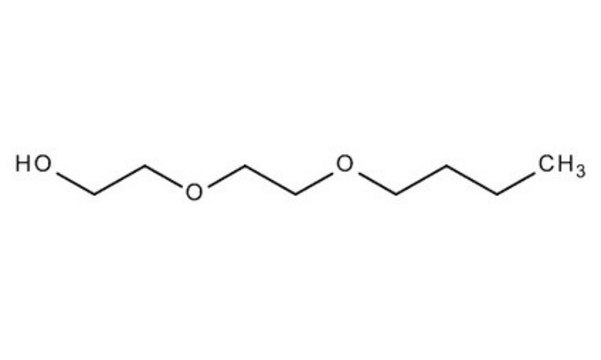

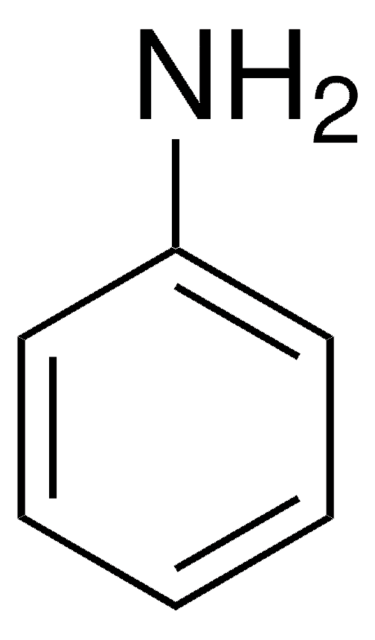
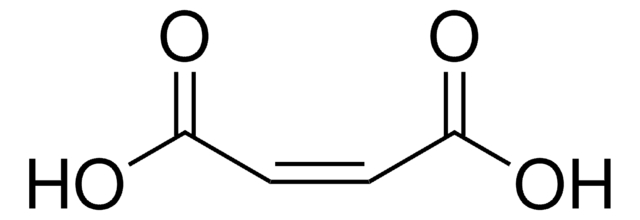
![[2-(Methacryloyloxy)ethyl]dimethyl-(3-sulfopropyl)ammonium hydroxide 95%](/deepweb/assets/sigmaaldrich/product/structures/217/219/73c91e1c-0ee4-4b3d-bead-a6dc3d09d1da/640/73c91e1c-0ee4-4b3d-bead-a6dc3d09d1da.png)
